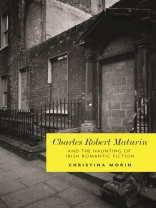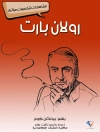A self-described “disappointed Author”, Charles Robert Maturin (1780-1824) has been largely relegated to the margins of literary history since his death in 1824. Yet, as this study demonstrates, he exerted a fundamental influence on the development of Irish fiction in the early nineteenth century. In particular, his novels dramatically underscore the continuing presence and deployment of the Gothic mode in Romantic Ireland – an influence now frequently overlooked in critical attention to the national and regional forms popularized in Ireland in the wake of Anglo-Irish Union (1801). Working from Jacques Derrida’s influential theory on ghosts, this study positions Maturin as the cornerstone on which to build a new paradigm of Irish Romantic fiction, one which accounts for the spectral traces of the past – cultural, social, and political – evident in early-nineteenth century Irish fiction. As it does so, it calls for renewed critical and popular attention to an author who himself continues spectrally to emerge in the works of his literary successors.
Innehållsförteckning
Acknowledgements
List of Illustrations
Chronology of Maturin’s life
Introduction: Spectres of Maturin; or, the ghosts of Irish Romantic fiction
1. Reviving Maturin: the life and works
2. Communing with the dead: the medium and media of Fatal revenge
3. Conjuring Glorvina: The wild Irish boy and the national tale
4. Witnessing the past: the textual ruins of The Milesian chief
5. Narrating history: the burden of words in Women; or pour et contre
6. Paratextual possession: re-reading Melmoth the wanderer
7. Re-thinking Scott’s revolution: The Albigenses as historical novel
Conclusion: Room for more: the future for Maturin research
Select bibliography
Index
Om författaren
Christina Morin is an Irish Research Council for the Humanities and Social Sciences (IRCHSS) postdoctoral research fellow at Trinity College Dublin, where she is working on a project titled ‘The Gothic Novel in Ireland, 1760-1830’












